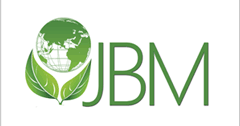Abstract
Different methods such as physical, biological and chemical are used to manage soil fungus increasing termites. Synthetic insecticide plays a vital part in the management of termites. The pesticide used in big quantities causes phytotoxicity, mammalian toxicity and resistance to pesticides in target pests and insect outbreaks. Intensive pesticides exert chronic effects on living organisms with annoyance for beneficial insects. It also accompanied with environmental hazards and developed resistance. Plant leaves extracts provide a distinct variety of biochemical compounds with diverse prospective uses. Resistance development requires the discovery of fresh biological compounds with a wide spectrum of action. Plant leaves extract and Chlorfenapyr solution in methanol and water with various concentrations (15 %, 10 %, 5 % and 0 %) were applied to the soil against termites to determine mortality and repellency. Posttreatment data was obtained and evaluated through statistical analysis. The result revealed that the extract of Conocarpus lancifolius with the solution of methanol and solution of water exhibited higher mortality of subterranean termites, whereas the solution of methanol had higher repellency and mortality than water solution of botanical extract. Water and methanol solution of insecticide chlorfenapyr used against the subterranean termites, both are found to be efficacious against termites, while insecticide with the solution of methanol revealed 100% mortality. Nonetheless, plant extract of C. lancifolius with water and methanol solution and chlorfenapyr with methanol solution can be applied as new biological control tools against subterranean termites.
Article History
Received: April 2, 2022; Accepted: April 27, 2022; Published: June 29, 2022
Recommended Citation
Nisar, M. S.,
Nazir, T.,
Zaman, S.,
Hussain, S. I.,
Khan, N. A.,
Aslam, H. U.,
Nazeer, W.,
& Akhtar, M.
(2022).
Toxicity and Repellency of Plant Extract and Termiticide against Fungus Growing Subterranean Termites (Blattodea: Termitidae),
Journal of Bioresource Management, 9
(2).





